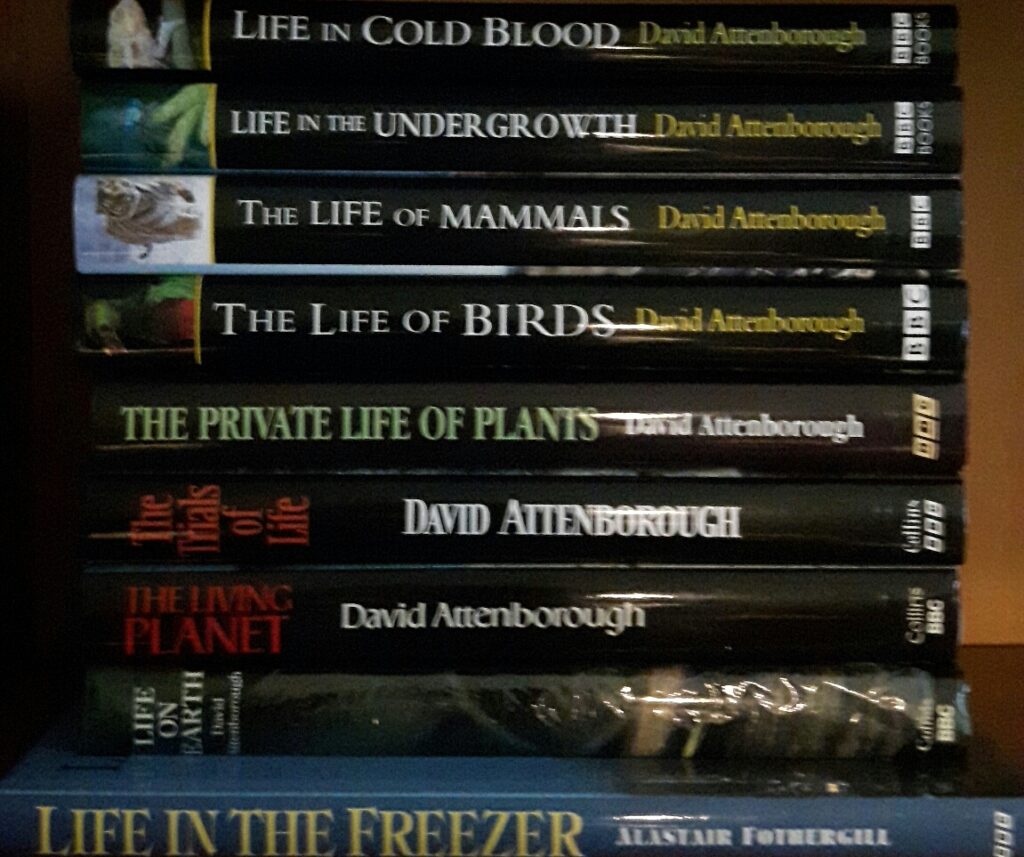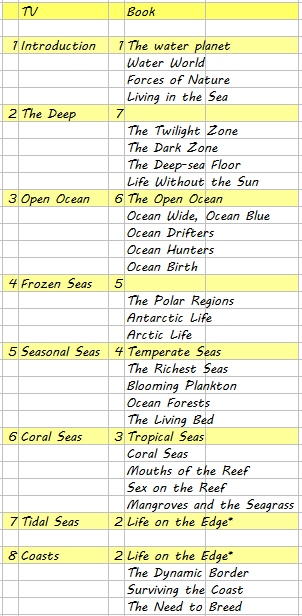David Attenborough has been connected with all kinds of writings. These can be grouped as both articles and books in which he either wrote only the introduction or the entire books is attributed to him. The articles are mostly out of the realm of this project, being out of reach. This piece is meant to cover the books, specifically those connected with TV series that he has either presented or narrated.
The books that made Attenborough most famous were those accompanying various television series collectively known, and released by the BBC, as Life Collection. There were two versions of the boxed set known as Life Collection, the first one seemingly released prematurely because the final installment of the box, Life in Cold Blood, had not yet been released. There is, however, a different series – Life in the Freezer – that stands out in a more dramatic way. In addition to the series being the only one that is geographically restricted and the only one that has episodes of only 30 minutes playing time (the usual playing time is 50-60 minutes) this one was accompanied by a book not written by Attenborough. He only wrote the introduction. This is the only series in the Life Collection standing out in this way. All the rest were written by him, and all the rest also stick to a certain look. Regardless of the length of a series. Be it 6 episodes (Plant series) or 13 (Life on Earth) all the accompanying books have the same basic look on the book shelf.

Sticking to the Life Collection.
Each series in the life collection was accompanied by a book. It may therefore be surprising to see the ways in which the two varied in terms of covering the subjects.

Since most people (in the UK) have free access to BBC but you would have to pay for the book it would be logical to expect only true fans to own those. Therefore numbers of episodes are taken as first priority, not those of chapters in books. Any aberration is listed, no matter how insignificant they may seem. Those in “Trials” and “Birds” and many others really are. For “Living Planet” the first 15 minutes are dealt with as a prologue in the book. This means a completely different approach. In the case of “Mammals”, strangely enough the order of episodes vs chapters was reversed.
Different titles and different order may simply indicate that too much restriction is irrelevant whether it applies to order or chapters/ episodes or their titles.
The book about “Cold Blood” has rearranged most of the material and split the final episode into two. Starting with amphibians is logical in the book, but TV probably has to start by introducing the basics, having the book you can go straight to the last chapter. That is not an option on TV.
In addition to writing those books he obviously wrote introduction to other books closely relating to his works, like Life in the Freezer and most of those accompanying his narrated series (in this project grouped as BBC blockbusters). It should be pointed out that he did not have anything to do with the books on “Nature’s Great Events”.
Additionally he wrote a few books himself apart from Life Collection:
Life on Air; memoirs of a broadcaster (2002) A domino book
Life on Air; memoirs of a broadcaster (2003) A domino book, a paperback version
Life on Air; memoirs of a broadcaster (2010) A BBC book, a revised and updated edition. Includes additions after Life of birds.
Life Stories (2009) Collins
New Life Stories (2011)
In an earlier part of his career he wrote diaries of his travels for series called “The Zoo Quest”
The Zoo Quest Expeditions (1980). Book Club Associates. Original works from 1956 (Guyana), 1957 (Indonesia) & 1959 (Paraguay).
Journeys to the Past (1981). Hutterworth Press. Abridged versions of Zoo Quest to Madagascar, Quest in Paradise and Quest under Capricorn (1959, 1960, 1961 & 1963).
It seems logical in this context to group interviews with him relating to any of his works:
The Tribal Eye (1976). WW Norton & Company Inc.
The First Eden, the Mediterranean World and Man (1987). Collins BBC Books.
BBC Blockbusters
Most blockbuster series were, just like the Life Collection series, accompanied by book. In this case Attenborough rarely did more than narrate them. In only a few recent occasions did he appear in person and only in the series “Green Planet” did he appear regularly.
These series had a ‘committed’ start and ending but the rest of the order of programmes seemed arbitrary. Comparing the order of programmes with those of chapters in the corresponding book gave the same impression.

Example taken from the first of the blockbusters, The Blue Planet
If a title of a chapter is not given (for example the chapter corresponding to episode 2 “The Deep” it has the exact same title. Most titles have been changed. Most programmes have been rearranged in the book. The book has the chapters sub-divided.
*There is only one chapter for the last two programmes.
This happened to be the only book, so far, that includes diagrams as well as photographs. In many books since then diagrams might have been welcome but were left out, perhaps for the sake of the looks and the opinion of general public. Maybe they were left out because BBC felt there were enough diagrams around online anyway.